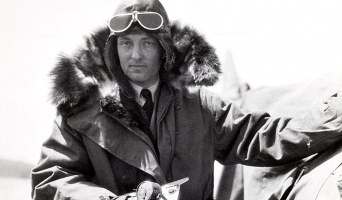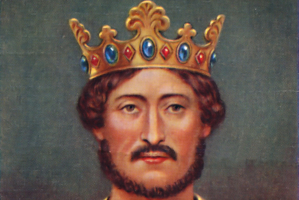Top 7 Interesting Facts about Richard Nixon
One of the most well-known American politicians of the second half of the 20th century was Richard Nixon. Nixon made his political debut shortly after World ... read more...War II when he was elected to represent California in both the House of Representatives and the Senate. With his historic resignation during the Watergate affair in August 1974, his political career came to an end. In the interim, Nixon rose to prominence as one of the most well-known people in the world and a constant in American politics. Are you curious about this president? Here are some interesting facts about Richard Nixon that you may want to know.
-
On January 9, 1913, Richard Milhous Nixon was born in a home his father had constructed on the family's lemon ranch in Yorba Linda, California. Francis A. and Hannah (Milhous) Nixon were his parents. His father changed from Methodism to the Quaker faith, and his mother was a Quaker. Nixon was a direct descendant of early English pioneer Thomas Cornell through his mother. Thomas Cornell was also an ancestor of Jimmy Carter, Bill Gates, and Ezra Cornell, who founded Cornell University.
Nixon's childhood was impacted by traditional Quaker practices like refraining from drinking, dancing and using profanity. The Religious Society of Friends, another name for the Quakers, originated in 17th-century England and supported pacifism and gender equality in spiritual matters at a time when such ideas were out of favor. Nixon had a religious exemption from participating in World War II, but he renounced it in order to join the Navy. Quakers in Milwaukee and Minneapolis allegedly didn't appreciate the association with the pariah president when he was later facing impeachment for his involvement in Watergate, and petitioned for his removal from office months before he resigned.
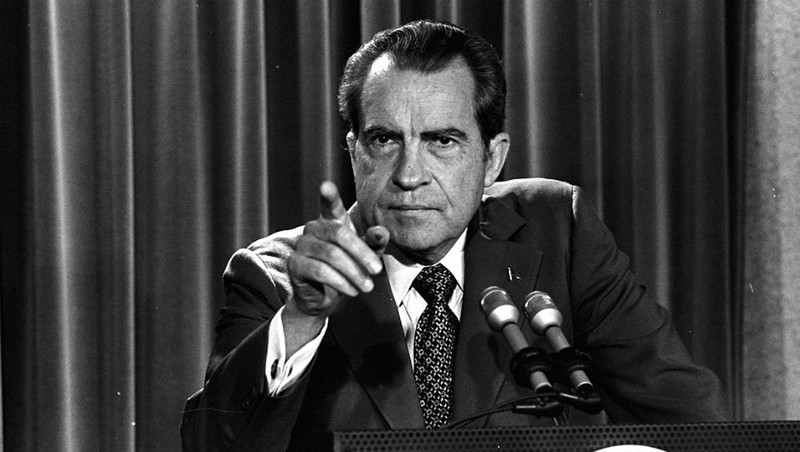
Photo: baophapluat 
Photo: wikiwand -
Looking back, it's simple to picture Nixon's polite demeanor blending in with the stiff-necked G-men of J. Edgar Hoover's Federal Bureau of Investigation (FBI). One of the interesting facts about Richard Nixon is when he, then barely 24 years old, applied to the Bureau in 1937, just over a month before finishing law school. Nixon awaited a response after the physical examination and in-person interview, but he never received one. Nixon was hired, but his appointment had been abruptly cancelled owing to budget cuts, which was revealed to him later when Nixon was vice president and asked why he had not been accepted.
After his return to California, he was admitted to the California bar in 1937 and started working for Wingert and Bewley in Whittier. His practice was mostly focused on wills, business lawsuits for regional oil firms, and other corporate issues. Given his dislike of open sexual discussion from women, Nixon was hesitant to work in divorce cases. He established his own Wingert and Bewley office in La Habra, California, in 1938. The following year, he was made a full partner in the business. Nixon later boasted that he was the first president in the modern era to have previously worked as a practicing lawyer.
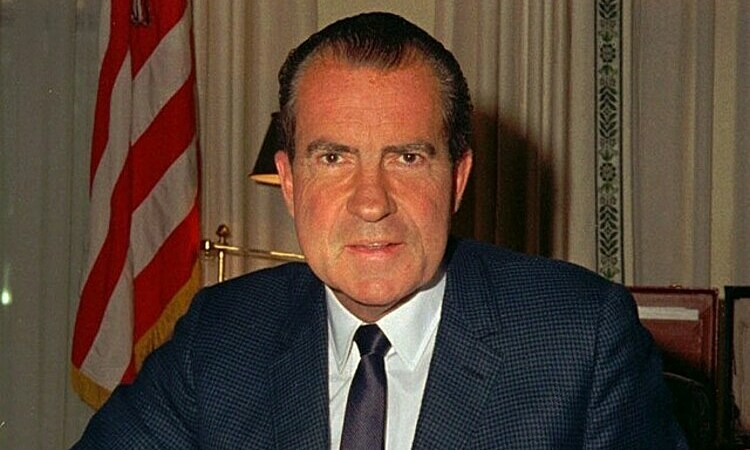
Photo: vnexpress 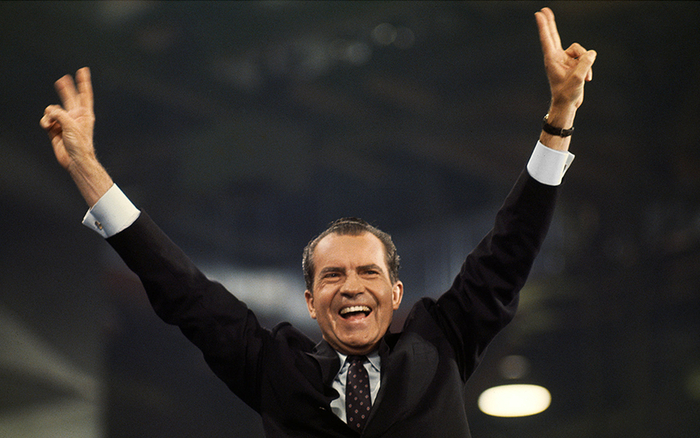
Photo: danviet -
Nixon was given a role in the Whittier Community Players' performance of The Dark Tower in January 1938. He was cast there opposite Thelma “Pat” Ryan, a high school teacher. For Nixon alone, it was “a case of love at first sight,” according Nixon, who noted in his memoirs that Pat Ryan repeatedly rejected the young attorney before finally consenting to go out with him. Nixon began wooing her and wrote love notes to her that sounded unusually sentimental. “And when the wind blows, the rains fall, and the sun shines through the clouds (as it is today), he still resolves, as he did then, that nothing so lovely ever occurred to him or anyone else as falling in love with Thee – my dearest heart,” the author said.
Ryan hesitated when Rixon asked her out when their courtship started; they dated for two years before she agreed. On June 21, 1940, they exchanged vows in a simple ceremony. The Nixons began their married lives in Whittier after a honeymoon in Mexico. Tricia (born in 1946) and Julie were their daughters (born 1948).
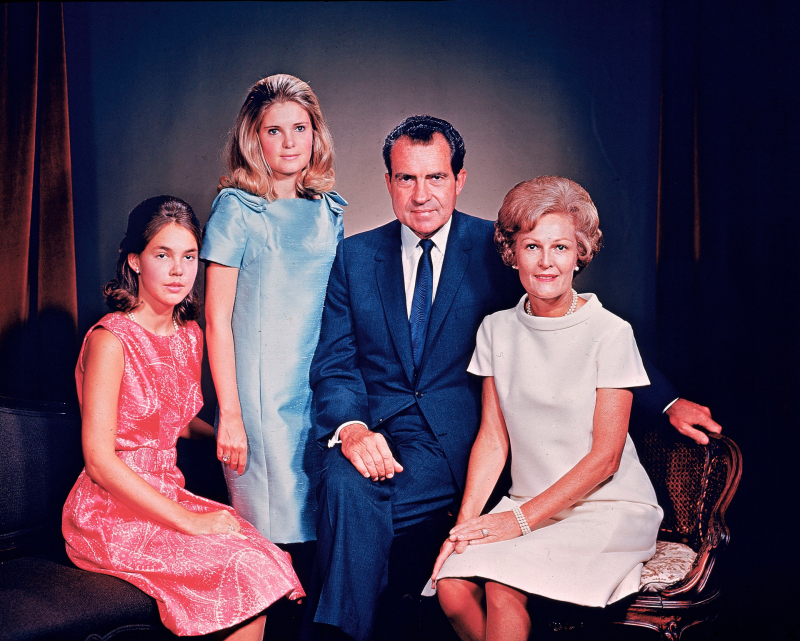
Photo: The Family of Nixon - nzherald 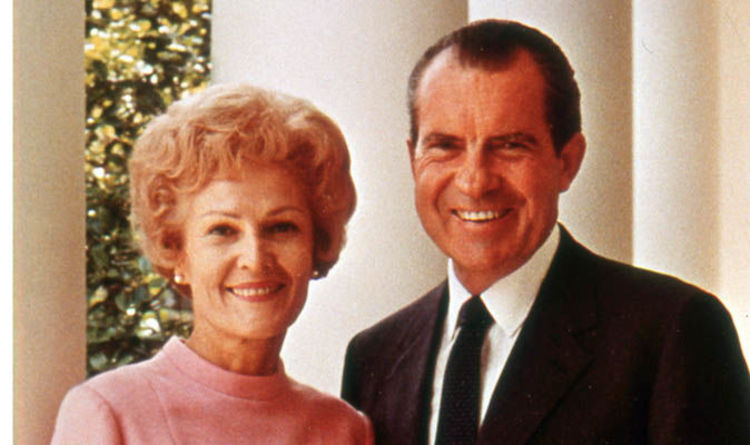
Photo: Nixon and his wife - express -
The political path of Nixon had some difficulties. Early on, Nixon was beset by controversy. After reports that Nixon was profiting from a trust fund filled by his supporters to help cover his political and personal costs surfaced in 1952, Dwight D. Eisenhower contemplated replacing Nixon as his vice-presidential running partner. Nixon skillfully inserted a story about his 6-year-old daughter falling in love with a cocker spaniel named Checkers that had been “donated” by a campaign donor when he addressed the matter on radio and television. The popular opinion changed, and he was kept on the ballot because they thought that a man who liked dogs couldn't be all evil. So, one of the interesting facts about Richard Nixon is a dog helped save his political career, although it was for a short period.
As Nixon later recalled, “it was dubbed the 'Checkers speech,' as though the mention of my dog was the sole thing that saved my career.” “Many of the detractors glossed over the fact that the fund was fully disclosed, my financial situation was openly discussed, and an admittedly sentimental but sincere request was made for public support.”
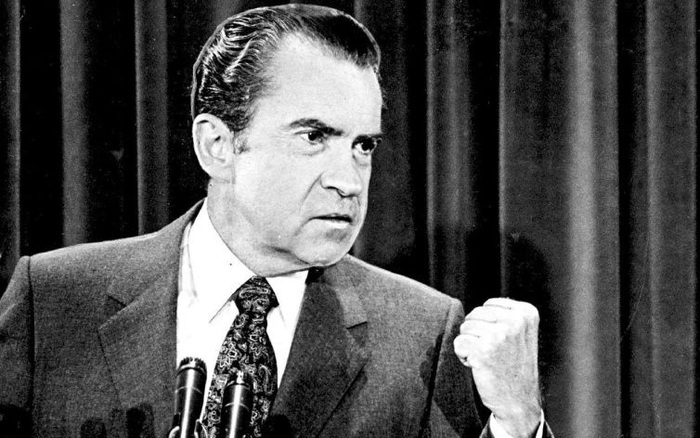
Photo: danviet 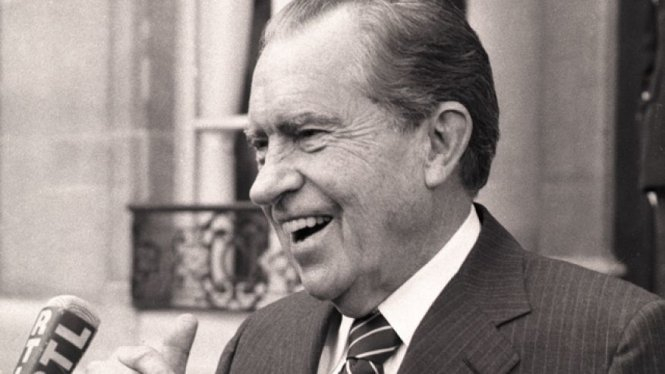
Photo: tuoitre -
The late President Richard M. Nixon excelled as a politician, diplomat, and elder statesman. He wasn't a style leader, though. Nixon, though, was appropriately impressed by the bodyguards of the international leaders he met. Nixon visited the leaders of the UK, the Philippines, Indonesia, India, and Iran, to mention a few, during his tenure as president.
Along with the progress of American foreign policy, the ceremonial uniforms worn by palace guards in many of those nations were among the items that the president kept in mind while on all of his official trips. So he made the decision to revamp the Secret Service. Only a few other people were impressed by the president's plans.
In January 1970, President Nixon modified the attire of the White House security personnel. He seemed to be the only person who liked the changes. They appeared more like a Middle Eastern royal guard or a high school marching band than like a security unit or like federal agents.
After the new uniforms were shown, complaints over the appearance came from all across Washington. The outfits were compared to everything from toy soldiers to vintage theater ushers to Nazi-style garb. Never ones to moan, the guards had to voice their displeasure with the caps, claiming they were too unpleasant to wear for extended periods of time. After he was criticized by the press, Nixon abandoned the idea and the outfits were eventually donated to a high school marching band.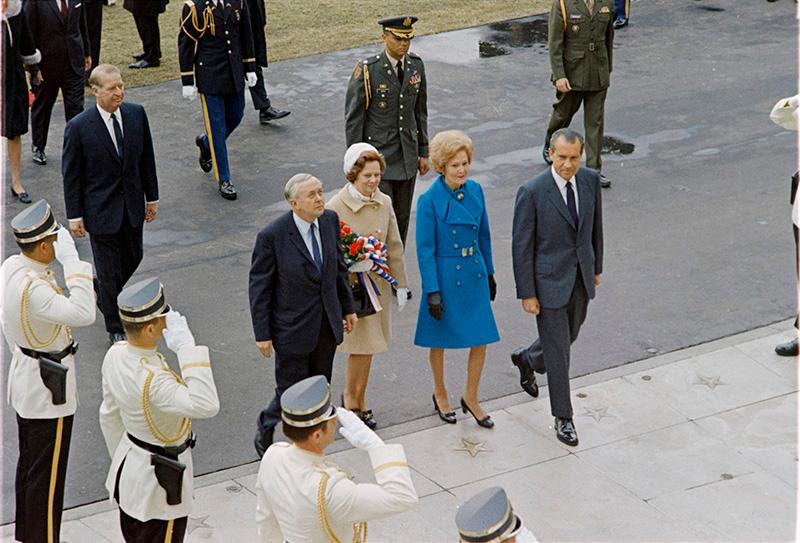
Photo: Richard Nixon Once Had The White House Guard Dress In Fancy White Uniforms - bradycarlson 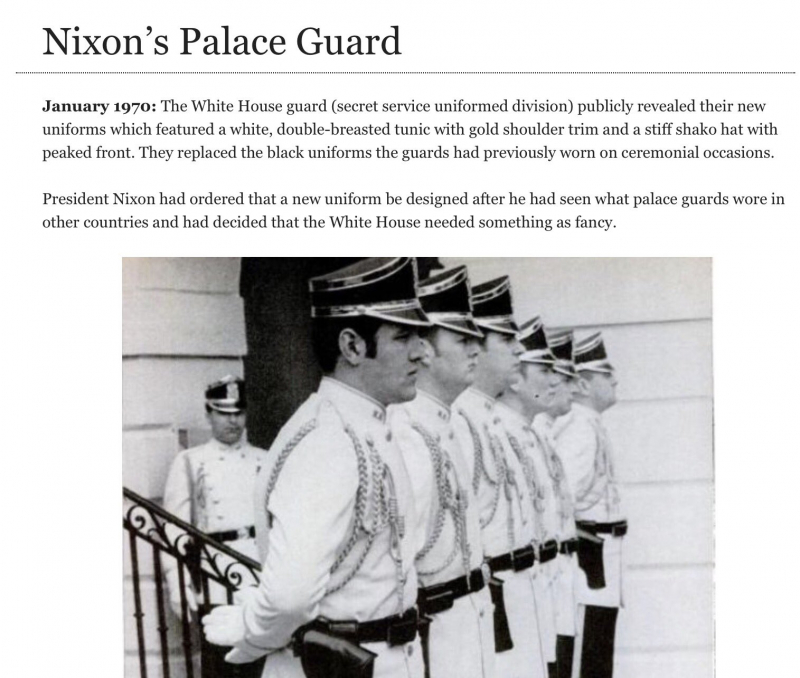
Photo: Richard Nixon Once Had The White House Guard Dress In Fancy White Uniforms - twitter -
Nixon was sent 200 miles away to take piano lessons with his aunt, who had attended the Indianapolis Conservatory of Music, in the eighth grade. Nixon's mother required that he practice on the family's upright piano every afternoon. Nixon could also play the saxophone, clarinet, accordion, and violin, despite never learning to read music. One of the interesting facts about Richard Nixon is he was one of the few presidents who was proficient in several musical instruments.
His musical abilities evolved into political advantages. For example, Nixon's 1963 appearance on “The Jack Paar Program,” during which he performed a song he had written, helped restore his reputation after he had lost the California governor's race the year before. He occasionally played the piano while he was president, performing “Happy Birthday” for Duke Ellington at the White House and “My Wild Irish Rose” for his wife at the Grand Ole Opry. Perhaps listening to music helped him unwind after a long day of demanding political activity.
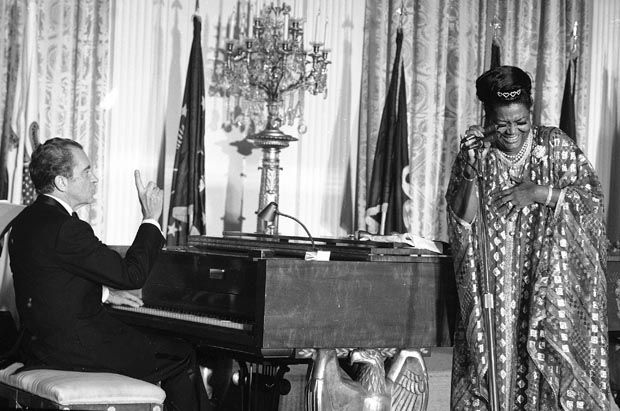
Photo: Richard Nixon plays piano for blues great Pearl Bailey - dallasnews 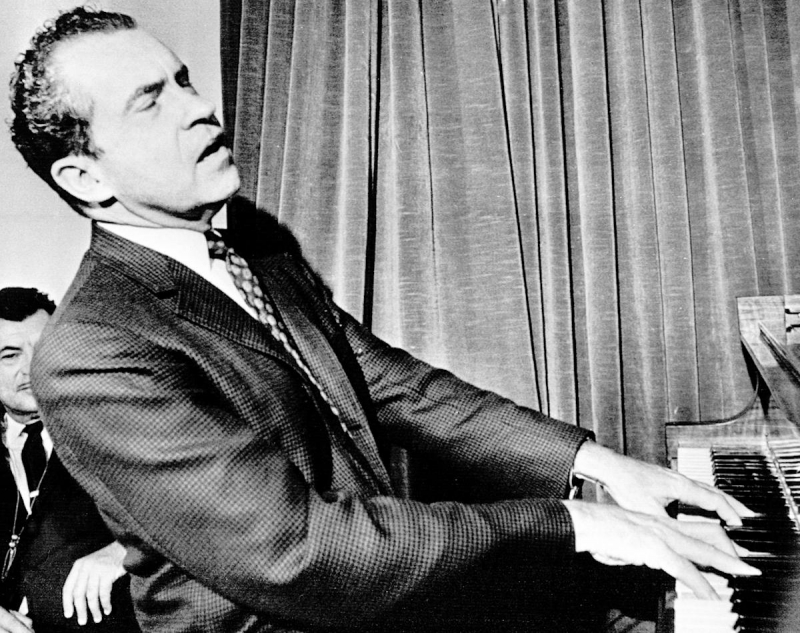
Photo: Nixon was playing piano - yahoo -
14 years had passed since the beginning of the Vietnam War when President Nixon took office. After more than ten years of battle, the U.S.'s engagement in the conflict had increased in the 1960s, and the nation as a whole was experiencing low morale. One of Nixon's campaign pledges was to terminate the war, and toward the conclusion of his administration, he delivered on that vow. Nixon declared that “new leadership will finish the conflict and win the peace in the Pacific” and pledged “peace with honor” in the Vietnam War. The media implied that he must have a “secret plan” because he did not specify how he intended to finish the conflict. His catchphrase, “Nixon's the One,” worked well.
A peace pact was reached in January 1973 after a gradual withdrawal left only 25,000 American soldiers in Vietnam by the end of 1972. In exchange for their prisoners of war, the United States consented to leave the region. The return of the troops to America only took two weeks. So, he was the person that marked the end of the Vietnam War after many years of battles.
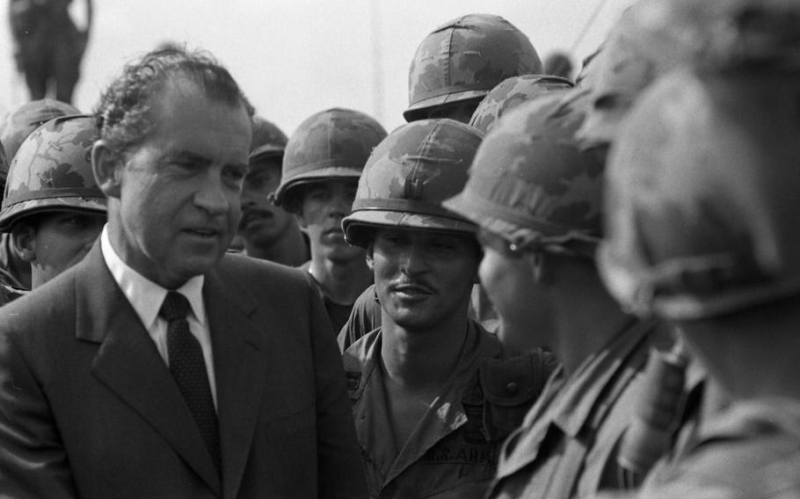
Photo: Nixon struggles to achieve 'peace with honor' and end Vietnam War | Stars and Stripes Source: Richard Nixon Foundation youtube channel









